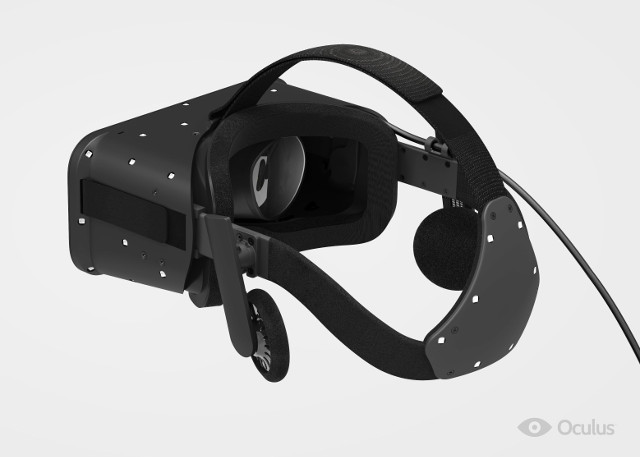Oculus used CES 2015 as the platform to publicly demonstrate its latest virtual reality headset called Crescent Bay. The demo we received was very impressive as the image quality and performance are now approaching some of the very best professional HMDs, but at a 10x to 50X lower price point (it is expected to retail for about $350).
 Oculus Rift Crescent Bay
Oculus Rift Crescent Bay
The demo rooms at CES were built with padded tiles, perhaps so people won’t get hurt if they run around in the virtual space. The headset fits comfortably over your eyeglasses and is not light, but manageable for short times. It is unclear how one would feel after wearing one for an hour, however. There is no focus or other adjustments possible and I noticed that the image was slightly out of focus. This could well have been an artifact of my progressive eyeglasses lens prescription which means only a horizontal band of the image will be in focus at any one time.
Several pieces of short content where shown over about a 10 minute period. These were:
- Baby T-Rex scene
- A slow motion robot fight
- A fast motion robot fight over a rubber duck
- A T-Rex in a hallway
- An alien encounter
- The inside of a submarine
- Viewing of a model of a building complex
- Standing at the edge of a tall building
Technical specs are few. All that the company would reveal is that it now uses an OLED display and that the field of view remains the same at around 100 degrees.

However, the improvement in image quality over the DK2 was quite apparent. DK2 has a very obviously pixellated image, whereas Crescent Bay has only a slightly noticeable pixel structure. Being an OLED display, the fill factor looked quite high so there was little “screen door effect”. The response speed is quite fast and I only saw some smearing on the fast robot fighting clip (they quickly went to see if the headset was ok when I told Oculus this impression). There is some aliasing in all the images and a general softness, possibly a result of my eyeglasses.
DK2 made big improvements over DK1 in terms of head tracking lag, which is again very minimal in Crescent Bay, although I did not try a very fast head swivel to test its limits.
The content was well chosen to offer some gaming, theme park, museum and professional applications. But it was all computer generated. I would definitely like to have seen what some very good 360-degree video content looked like in the headset.
The ability to fool your senses is real, however. Standing on the ledge of a tall building and being able to step off is a hard thing to do. And it is a bit disconcerting to hear the voice of the technician in front of you and see virtuvia T-Rex, or to look down and not see your own hands and feet. The model of the buildings showed the value in professional applications as you were able to bend down and walk or look around the complex as it floated in space.
All in all, this was the best VR demo I saw at CES, including the Samsung GearVR, although I did not have time to see them all,

